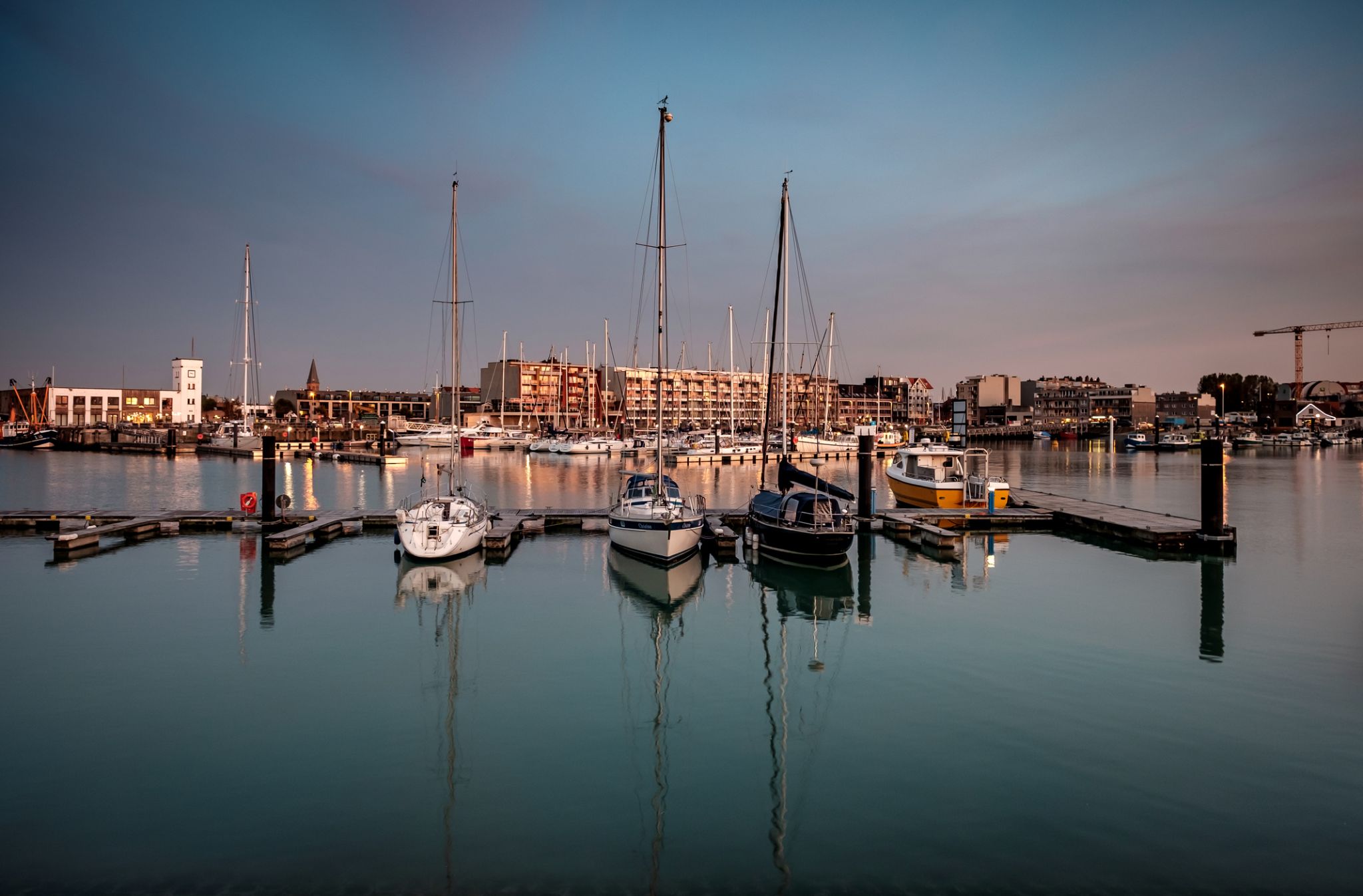

| Region rejsu : Ameryka Południowa/Antarktyda |
| Firma : MSC Cruises |
| Statek : MSC Preziosa |
| Data rozpoczęcia : pt. 03 kwi 2026 |
| Data zakończenia : wt. 21 kwi 2026 |
| Liczba nocy : 18 nocy |
| Dzień | Data | Port | Wypłynięcie | Odpłynięcie |
|---|---|---|---|---|
| 1 | 3.04 pt. | Rio de Janeiro / Brazylia | 20:00 | |
| 2 | 4.04 sob. | Dzień na morzu / Morze | ||
| 3 | 5.04 niedz. | Ilheus / Brazylia | 09:00 | 19:00 |
| 4 | 6.04 pon. | Salwador / Brazylia | 07:00 | 17:00 |
| 5 | 7.04 wt. | Maceió / Brazylia | 09:00 | 17:00 |
| 6 | 8.04 śr. | Dzień na morzu / Morze | ||
| 7 | 9.04 czw. | Dzień na morzu / Morze | ||
| 8 | 10.04 pt. | Dzień na morzu / Morze | ||
| 9 | 11.04 sob. | Dzień na morzu / Morze | ||
| 10 | 12.04 niedz. | Dzień na morzu / Morze | ||
| 11 | 13.04 pon. | Dzień na morzu / Morze | ||
| 12 | 14.04 wt. | Madera / Portugalia | 09:00 | 19:00 |
| 13 | 15.04 śr. | Dzień na morzu / Morze | ||
| 14 | 16.04 czw. | Vigo / Hiszpania | 09:00 | 17:00 |
| 15 | 17.04 pt. | Gijon / Hiszpania | 09:00 | 18:00 |
| 16 | 18.04 sob. | Dzień na morzu / Morze | ||
| 17 | 19.04 niedz. | Southampton / Wielka Brytania | 07:00 | 20:00 |
| 18 | 20.04 pon. | Le Havre / Francja | 07:00 | 20:00 |
| 19 | 21.04 wt. | Zeebrugge / Belgia | 09:00 |
Zakwaterowanie w kabinie wybranej kategorii
Wyżywienie w restauracji (bufecie) w formie „szwedzkiego stołu”, obejmujące śniadanie, obiad i kolację, a także przekąski w kawiarni i pizzerii przez cały dzień. Woda, soki, herbata i kawa z automatów dostępne w bufecie bezpłatnie przez 24 godziny.
Wyżywienie w głównej restauracji „a la carte”. Zazwyczaj na wszystkich statkach znajdują się dwie lub trzy główne restauracje z obsługą kelnerską według menu. Potrawy w takich restauracjach są bardziej wykwintne i urozmaicone niż w bufecie. Napoje zamawiane są za dodatkową opłatą.
Rozrywka na pokładzie, taka jak animacje, warsztaty, aerobik, wieczorne przedstawienia w teatrze, muzyka na żywo w barach, dyskoteki.
Korzystanie ze wszystkich ogólnodostępnych stref statku: centrum fitness (siłownia), baseny, jacuzzi przy basenach, aquapark, biblioteka, mini-kluby dla dzieci.
Usługi opiekunów w mini-klubach dla dzieci od 6 miesięcy do 17 lat.
Gry na boiskach sportowych, w tym tenis, mini-piłka nożna, koszykówka, badminton, mini-golf i inne.
Korzystanie ze środków pływających podczas załadunku lub zejścia na ląd w portach, do których statek nie wpływa.
Transport bagażu na początku i na końcu rejsu.
Opłata serwisowa – 12 € dziennie od osoby.
W zależności od kategorii kabiny mogą Państwo otrzymać dodatkowe usługi bezpłatnie. Na przykład napoje ALL INCLUSIVE w barach i restauracjach, obsługę w kabinie z bezpłatną dostawą 24 godziny na dobę, korzystanie z centrum spa.
Ważne: Firma MSC ma prawo zamienić kabinę na taką samej kategorii lub wyższej. MSC dołoży wszelkich starań, aby uniknąć zmiany kabiny.
Dodatkowe koszty:
• ubezpieczenie (ubezpieczenie medyczne, ubezpieczenie od rezygnacji z podróży)
• przelot samolotem lub podróż koleją (koszty transportu do portu początkowego i z portu końcowego rejsu)
• transfery (z lotniska/dworca kolejowego do portu morskiego i z powrotem)
• wycieczki fakultatywne
• rezerwacja hoteli przed lub po rejsie, jeśli chcą Państwo przedłużyć pobyt na lądzie
Dodatkowo płatne na statku:
• korzystanie z alternatywnych barów i restauracji
• usługi centrów spa, fryzjerów, salonów piękności
• usługi medyczne
• pralnia, prasowanie bielizny
• kasyno
• automaty do gier i inne w zależności od statku
Przy każdym zakupie towarów na statku w barach, restauracjach, sklepach oraz przy korzystaniu z usług w centrum spa, salonie fryzjerskim itp. zostanie naliczona dodatkowa opłata serwisowa, która średnio wynosi 15% wartości zakupu.
W standardową cenę rejsu zazwyczaj nie jest wliczony pakiet napojów. Mogą Państwo dodatkowo wybrać i dodać do swojego rejsu odpowiedni pakiet napojów.
Pakiety napojów na sezony: „Zima 2024–2025”, „Lato 2025”, „Zima 2025–2026”, „Lato 2026”, „Zima 2026–2027”
Pakiety napojów muszą być zarezerwowane przez wszystkich gości zakwaterowanych w tej samej kajucie, w tym dzieci powyżej 3 lat (dla nich rezerwowany jest MINORS PACKAGE – pakiet dla dzieci).
Miejsca przy wspólnym stole w głównej restauracji podczas kolacji są możliwe tylko wtedy, gdy wszyscy goście mają zarezerwowany ten sam pakiet napojów (lub nikt z nich nie ma pakietu).
Pakiety przeznaczone są wyłącznie do użytku osobistego, karta rejsowa nie może być przekazywana innym osobom. Przy każdym zamówieniu można poprosić tylko o jeden napój. W przypadku naruszenia zasad korzystania z pakietu, linia rejsowa zastrzega sobie prawo do zablokowania pakietu bez zwrotu kosztów za niewykorzystane dni.
Pakiety obowiązują każdego dnia trwania rejsu i nie mogą być kupowane na pojedyncze dni.
Zgodnie z prawem Arabii Saudyjskiej, podczas postoju w portach Arabii Saudyjskiej napoje alkoholowe nie są serwowane (dostępne są tylko napoje bezalkoholowe). Napoje alkoholowe będą dostępne dopiero po wypłynięciu statku z portu i przebywaniu na morzu.
Cena pakietów napojów przy zakupie na pokładzie będzie wyższa niż przy rezerwacji rejsu.
Szczegółowa lista napojów wchodzących w skład pakietów będzie dostępna w menu barów na pokładzie statku.
Pakiety napojów obowiązują również na wyspach Sir Bani Yas i Ocean Cay.
Linia rejsowa zastrzega sobie prawo do zawieszenia działania pakietów napojów w dowolnym momencie.
Cena podana jest za dzień, za osobę.
Gdzie obowiązują:
Morze Śródziemne; Europa Północna; ZEA i Zatoka Perska; Wyspy Kanaryjskie; Karaiby z Fort-de-France; Rejsy dookoła świata
EASY PACKAGE (dla dorosłych od 18 lat)
Określony, ograniczony wybór napojów alkoholowych i bezalkoholowych serwowanych w kieliszkach:
Piwo (1 rodzaj) i piwo bezalkoholowe
Wino (białe, różowe, czerwone)
Koktajle alkoholowe i bezalkoholowe
Ograniczony wybór mocnych alkoholi
Napoje gazowane i soki
Klasyczne napoje gorące: espresso, americano, cappuccino, caffe latte, herbata
Woda mineralna w butelkach
Ograniczenie dotyczące napojów alkoholowych:
15 napojów dziennie (napoje bezalkoholowe – bez ograniczeń).
Szczegółowa lista napojów dostępna jest w menu barów na pokładzie statku.
Osoby chętne mogą skorzystać ze zniżki 7 € przy zakupie droższego napoju, który nie jest objęty pakietem Easy Package (do różnicy w cenie zostanie doliczona opłata serwisowa w wysokości 15%).
Gdzie obowiązuje:
24 godziny na dobę w wybranych barach na pokładzie, w głównych restauracjach oraz w restauracji bufetowej.
Gdzie nie obowiązuje:
W restauracjach specjalnych, w Venchi 1878, Jean-Philippe Maury, MSC Virtuosa Starship Club, MSC World Europa & America Coffee Emporium, MSC World Europa Raj Polo Tea Room.
Uwaga:
Pakiet muszą zarezerwować wszyscy goście zakwaterowani w tej samej kajucie lub podróżujący razem – wówczas miejsca w głównej restauracji będą przy wspólnym stole. Zasada ta dotyczy również dzieci od 3 roku życia, dla których kupowany jest MINORS PACKAGE (dla dzieci).
Do ceny pakietu nie są wliczone: minibar, napoje alkoholowe w butelkach, niektóre marki napojów, lody.
Ceny:
Rejsy od 1 do 4 dni – 40 €/dzień
Rejsy od 5 do 10 dni – 40 €/dzień
Rejsy od 11 dni i więcej – 36 €/dzień
EASY PLUS PACKAGE (dla dorosłych od 18 lat)
Szeroki wybór napojów alkoholowych i bezalkoholowych serwowanych w kieliszkach o wartości do 9 €:
Piwo lane, rzemieślnicze, butelkowe oraz piwo bezalkoholowe
Wino (białe, różowe, czerwone, a także musujące)
Napój dnia
Koktajle alkoholowe i bezalkoholowe
Mocne alkohole znanych marek
Napoje gazowane i soki
Szeroki wybór klasycznych napojów gorących: espresso, americano, cappuccino, caffe latte, kawa mrożona, herbata itp.
Woda mineralna w butelkach
Ograniczenie dotyczące napojów alkoholowych:
15 napojów dziennie (napoje bezalkoholowe – bez ograniczeń).
Pakiet Easy Plus Package daje 10% zniżki na zakup butelek wina na pokładzie.
Osoby chętne mogą skorzystać ze zniżki 9 € przy zakupie droższego napoju, który nie jest objęty pakietem Easy Plus Package (do różnicy w cenie zostanie doliczona opłata serwisowa w wysokości 15%).
Gdzie obowiązuje:
24 godziny na dobę w barach na pokładzie, w głównych restauracjach, w restauracji bufetowej oraz w restauracjach specjalnych.
Gdzie nie obowiązuje:
Venchi 1878, Jean-Philippe Maury oraz MSC Virtuosa Starship Club.
Uwaga:
Pakiet muszą zarezerwować wszyscy goście zakwaterowani w tej samej kajucie lub podróżujący razem – wówczas miejsca w głównej restauracji będą przy wspólnym stole. Zasada ta dotyczy również dzieci od 3 roku życia, dla których kupowany jest MINORS PACKAGE (dla dzieci).
Do ceny pakietu nie są wliczone: minibar, napoje alkoholowe w butelkach, niektóre marki napojów, lody.
Ceny:
Rejsy od 1 do 4 dni – 54 €/dzień
Rejsy od 5 do 10 dni – 54 €/dzień
Rejsy od 11 dni i więcej – 50 €/dzień
PREMIUM EXTRA PACKAGE (dla dorosłych od 18 lat)
Szeroki wybór napojów alkoholowych i bezalkoholowych serwowanych w kieliszkach o wartości do 14 €:
Piwo lane, rzemieślnicze, butelkowe i bezalkoholowe
Szeroki wybór win i szampanów
Napój dnia
Koktajle alkoholowe i bezalkoholowe
Mocne alkohole segmentu premium
Napoje gazowane i soki
Szeroki wybór klasycznych napojów gorących: espresso, americano, cappuccino, caffe latte, kawa mrożona, herbata itd.
Woda mineralna w butelkach
Ograniczenie dotyczące napojów alkoholowych:
15 napojów dziennie (napoje bezalkoholowe – bez ograniczeń).
Pakiet Premium Extra Package daje 25% zniżki na zakup butelek wina i szampana na pokładzie.
Gdzie obowiązuje:
24 godziny na dobę w barach na pokładzie, w głównych restauracjach, w restauracji bufetowej oraz w restauracjach alternatywnych.
Gdzie nie obowiązuje:
Venchi 1878, Jean-Philippe Maury oraz MSC Virtuosa Starship Club.
Uwaga:
Pakiet muszą zarezerwować wszyscy goście zakwaterowani w tej samej kabinie lub podróżujący razem; w takim przypadku w głównej restauracji zostanie przydzielony wspólny stół. Zasada ta dotyczy również dzieci od 3 roku życia – dla nich obowiązuje zakup pakietu MINORS PACKAGE.
Nie są wliczone w cenę: mini-bar, napoje alkoholowe w butelkach, niektóre marki napojów, lody.
Ceny:
Rejsy od 1 do 4 dni – 75 €/dzień
Rejsy od 5 do 10 dni – 75 €/dzień
Rejsy od 11 dni i więcej – 70 €/dzień
ALCOHOL-FREE PACKAGE (dla dorosłych od 18 lat)
Szeroki wybór napojów bezalkoholowych, gazowanych i energetycznych, woda mineralna w butelkach, soki owocowe, szeroki asortyment napojów kawowych, herbata oraz lody „na wynos”.
Gdzie obowiązuje:
24 godziny na dobę w wybranych barach na pokładzie, w głównych restauracjach oraz w restauracji bufetowej.
Gdzie nie obowiązuje:
W restauracjach alternatywnych, w Venchi 1878, Jean-Philippe Maury, MSC Virtuosa Starship Club.
Uwaga:
Pakiet muszą zarezerwować wszyscy goście zakwaterowani w tej samej kabinie lub podróżujący razem; w takim przypadku w głównej restauracji zostanie przydzielony wspólny stół. Zasada ta dotyczy również dzieci od 3 roku życia – dla nich obowiązuje zakup pakietu MINORS PACKAGE.
Nie są wliczone w cenę: mini-bar, napoje alkoholowe.
Ceny:
Rejsy od 1 do 4 dni – 26 €/dzień
Rejsy od 5 do 10 dni – 26 €/dzień
Rejsy od 11 dni i więcej – 24 €/dzień
MINORS PACKAGE (dla dzieci od 3 do 17 lat)
Szeroki wybór napojów bezalkoholowych, gazowanych i energetycznych, woda mineralna w butelkach, soki owocowe, szeroki asortyment napojów kawowych, herbata oraz lody „na wynos”.
Gdzie obowiązuje:
24 godziny na dobę w wybranych barach na pokładzie, w głównych restauracjach oraz w restauracji bufetowej.
Gdzie nie obowiązuje:
W restauracjach alternatywnych, w Venchi 1878, Jean-Philippe Maury, MSC Virtuosa Starship Club.
Uwaga:
Pakiet jest przeznaczony dla dzieci od 3 do 17 lat podróżujących w jednej kabinie z dorosłymi. Dorośli pasażerowie muszą wykupić pakiety napojów dla dorosłych.
Nie są wliczone w cenę: mini-bar, napoje alkoholowe.
Ceny:
Rejsy od 1 do 4 dni – 17 €/dzień
Rejsy od 5 do 10 dni – 17 €/dzień
Rejsy od 11 dni i więcej – 17 €/dzień
Karaiby z Miami; Ameryka Północna; Alaska
EASY PACKAGE (dla dorosłych od 21 lat)
Określony, ograniczony wybór napojów alkoholowych i bezalkoholowych serwowanych w kieliszkach:
Piwo (1 rodzaj) i piwo bezalkoholowe
Wino (białe, różowe, czerwone)
Koktajle alkoholowe i bezalkoholowe
Ograniczony wybór mocnych alkoholi
Napoje gazowane i soki
Klasyczne napoje gorące: espresso, americano, cappuccino, caffe latte, herbata
Woda mineralna w butelkach
Ograniczenie:
15 napojów alkoholowych dziennie (napoje bezalkoholowe – bez ograniczeń).
Szczegółowa lista napojów jest dostępna w menu barów na pokładzie statku.
Możliwość skorzystania ze zniżki 10 $ przy zakupie droższego napoju, niewchodzącego w skład Easy Package (do różnicy w cenie doliczana jest opłata serwisowa 18%).
Gdzie obowiązuje:
24 godziny na dobę w wybranych barach na pokładzie, w głównych restauracjach i w restauracji bufetowej.
Gdzie nie obowiązuje:
Restauracje alternatywne, Venchi 1878, Jean-Philippe Maury, MSC Virtuosa Starship Club, MSC World Europa & America Coffee Emporium, MSC World Europa Raj Polo Tea Room.
Uwaga:
Pakiet muszą wykupić wszyscy pasażerowie w tej samej kabinie lub podróżujący razem – w takim przypadku w głównej restauracji przydzielany jest wspólny stół. Zasada dotyczy także dzieci od 3 lat – dla nich obowiązuje MINORS PACKAGE.
Nie obejmuje: mini-baru, alkoholi w butelkach, niektórych marek napojów, lodów.
Ceny:
1–4 dni – 40 €/dzień
5–10 dni – 40 €/dzień
11 dni i więcej – 36 €/dzień
EASY PLUS PACKAGE (dla dorosłych od 21 lat)
Szeroki wybór napojów alkoholowych i bezalkoholowych serwowanych w kieliszkach, o wartości do 14 $:
Piwo lane, rzemieślnicze, butelkowe i bezalkoholowe
Wino (białe, różowe, czerwone, musujące)
Napój dnia
Koktajle alkoholowe i bezalkoholowe
Mocne alkohole znanych marek
Napoje gazowane i soki
Szeroki wybór klasycznych napojów gorących: espresso, americano, cappuccino, caffe latte, kawa mrożona, herbata itp.
Woda mineralna w butelkach
Ograniczenie:
15 napojów alkoholowych dziennie (napoje bezalkoholowe – bez ograniczeń).
Pakiet daje 10% zniżki na zakup butelek wina na pokładzie.
Możliwość skorzystania ze zniżki 14 $ przy zakupie droższego napoju, niewchodzącego w skład Easy Plus Package (do różnicy w cenie doliczana jest opłata serwisowa 18%).
Gdzie obowiązuje:
24 godziny na dobę w barach na pokładzie, w głównych restauracjach, w restauracji bufetowej oraz w restauracjach alternatywnych.
Gdzie nie obowiązuje:
Venchi 1878, Jean-Philippe Maury, MSC Virtuosa Starship Club.
Uwaga:
Pakiet muszą wykupić wszyscy pasażerowie w tej samej kabinie lub podróżujący razem. Zasada dotyczy także dzieci od 3 lat – dla nich obowiązuje MINORS PACKAGE.
Nie obejmuje: mini-baru, alkoholi w butelkach, niektórych marek napojów, lodów.
Ceny:
1–4 dni – 54 €/dzień
5–10 dni – 54 €/dzień
11 dni i więcej – 50 €/dzień
PREMIUM EXTRA PACKAGE (dla dorosłych od 21 lat)
Najszerszy wybór napojów alkoholowych i bezalkoholowych serwowanych w kieliszkach, o wartości do 16 $:
Piwo lane, rzemieślnicze, butelkowe i bezalkoholowe
Szeroki wybór win i szampanów
Napój dnia
Koktajle alkoholowe i bezalkoholowe
Mocne alkohole segmentu premium
Napoje gazowane i soki
Szeroki wybór klasycznych napojów gorących: espresso, americano, cappuccino, caffe latte, kawa mrożona, herbata itp.
Woda mineralna w butelkach
Ograniczenie:
15 napojów alkoholowych dziennie (napoje bezalkoholowe – bez ograniczeń).
Pakiet daje 25% zniżki na zakup butelek wina i szampana na pokładzie.
Gdzie obowiązuje:
24 godziny na dobę w barach na pokładzie, w głównych restauracjach, w restauracji bufetowej oraz w restauracjach alternatywnych.
Gdzie nie obowiązuje:
Venchi 1878, Jean-Philippe Maury, MSC Virtuosa Starship Club.
Uwaga:
Pakiet muszą wykupić wszyscy pasażerowie w tej samej kabinie lub podróżujący razem. Zasada dotyczy także dzieci od 3 lat – dla nich obowiązuje MINORS PACKAGE.
Nie obejmuje: mini-baru, alkoholi w butelkach, niektórych marek napojów, lodów.
Ceny:
1–4 dni – 75 €/dzień
5–10 dni – 75 €/dzień
11 dni i więcej – 70 €/dzień
ALCOHOL-FREE PACKAGE (dla dorosłych od 21 lat)
Szeroki wybór napojów bezalkoholowych, gazowanych i energetycznych, woda mineralna w butelkach, soki owocowe, szeroki asortyment napojów kawowych, herbata i lody „na wynos”.
Gdzie obowiązuje:
24 godziny na dobę w wybranych barach na pokładzie, w głównych restauracjach i w restauracji bufetowej.
Gdzie nie obowiązuje:
Restauracje alternatywne, Venchi 1878, Jean-Philippe Maury, MSC Virtuosa Starship Club.
Uwaga:
Pakiet muszą wykupić wszyscy pasażerowie w tej samej kabinie lub podróżujący razem. Zasada dotyczy także dzieci od 3 lat – dla nich obowiązuje MINORS PACKAGE.
Nie obejmuje: mini-baru, alkoholi.
Ceny:
1–4 dni – 26 €/dzień
5–10 dni – 26 €/dzień
11 dni i więcej – 24 €/dzień
MINORS PACKAGE (dla dzieci od 3 do 20 lat)
Szeroki wybór napojów bezalkoholowych, gazowanych i energetycznych, woda mineralna w butelkach, soki owocowe, szeroki asortyment napojów kawowych, herbata i lody „na wynos”.
Gdzie obowiązuje:
24 godziny na dobę w wybranych barach na pokładzie, w głównych restauracjach i w restauracji bufetowej.
Gdzie nie obowiązuje:
Restauracje alternatywne, Venchi 1878, Jean-Philippe Maury, MSC Virtuosa Starship Club.
Uwaga:
Pakiet przeznaczony dla dzieci w wieku 3–20 lat podróżujących w tej samej kabinie z dorosłymi. Dorośli muszą wykupić pakiety napojów dla dorosłych.
Nie obejmuje: mini-baru, napojów alkoholowych.
Ceny:
1–4 dni – 17 €/dzień
5–10 dni – 17 €/dzień
11 dni i więcej – 17 €/dzień
Azja; Daleki Wschód
EASY PACKAGE (dla dorosłych od 20 lat)
Określony, ograniczony wybór napojów alkoholowych i bezalkoholowych serwowanych w kieliszkach:
Piwo (1 rodzaj) i piwo bezalkoholowe
Wino (białe, różowe, czerwone)
Koktajle alkoholowe i bezalkoholowe
Ograniczony wybór mocnych alkoholi
Napoje gazowane i soki
Klasyczne napoje gorące: espresso, americano, cappuccino, caffe latte, herbata
Woda mineralna w butelkach
Ograniczenie:
15 napojów alkoholowych dziennie (napoje bezalkoholowe – bez ograniczeń).
Szczegółowa lista napojów jest dostępna w menu barów na pokładzie statku.
Możliwość skorzystania ze zniżki 8 $ przy zakupie droższego napoju, niewchodzącego w skład Easy Package (do różnicy w cenie doliczana jest opłata serwisowa 18%).
Gdzie obowiązuje:
24 godziny na dobę w wybranych barach na pokładzie, w głównych restauracjach i w restauracji bufetowej.
Gdzie nie obowiązuje:
Restauracje alternatywne, Venchi 1878, Jean-Philippe Maury, MSC Virtuosa Starship Club, MSC World Europa & America Coffee Emporium, MSC World Europa Raj Polo Tea Room.
Uwaga:
Pakiet muszą wykupić wszyscy pasażerowie w tej samej kabinie lub podróżujący razem. Zasada dotyczy także dzieci od 3 lat – dla nich obowiązuje MINORS PACKAGE.
Nie obejmuje: mini-baru, alkoholi w butelkach, niektórych marek napojów, lodów.
Ceny:
1–4 dni – 40 €/dzień
5–10 dni – 40 €/dzień
11 dni i więcej – 36 €/dzień
EASY PLUS PACKAGE (dla dorosłych od 20 lat)
Szeroki wybór napojów alkoholowych i bezalkoholowych serwowanych w kieliszkach, o wartości do 10 $:
Piwo lane, rzemieślnicze, butelkowe i bezalkoholowe
Wino (białe, różowe, czerwone, musujące)
Napój dnia
Koktajle alkoholowe i bezalkoholowe
Mocne alkohole znanych marek
Napoje gazowane i soki
Szeroki wybór klasycznych napojów gorących: espresso, americano, cappuccino, caffe latte, kawa mrożona, herbata itp.
Woda mineralna w butelkach
Ograniczenie:
15 napojów alkoholowych dziennie (napoje bezalkoholowe – bez ograniczeń).
Pakiet daje 10% zniżki na zakup butelek wina na pokładzie.
Możliwość skorzystania ze zniżki 10 $ przy zakupie droższego napoju, niewchodzącego w skład Easy Plus Package (do różnicy w cenie doliczana jest opłata serwisowa 18%).
Gdzie obowiązuje:
24 godziny na dobę w barach na pokładzie, w głównych restauracjach, w restauracji bufetowej oraz w restauracjach alternatywnych.
Gdzie nie obowiązuje:
Venchi 1878, Jean-Philippe Maury, MSC Virtuosa Starship Club.
Uwaga:
Pakiet muszą wykupić wszyscy pasażerowie w tej samej kabinie lub podróżujący razem. Zasada dotyczy także dzieci od 3 lat – dla nich obowiązuje MINORS PACKAGE.
Nie obejmuje: mini-baru, alkoholi w butelkach, niektórych marek napojów, lodów.
Ceny:
1–4 dni – 54 €/dzień
5–10 dni – 54 €/dzień
11 dni i więcej – 50 €/dzień
PREMIUM EXTRA PACKAGE (dla dorosłych od 20 lat)
Najszerszy wybór napojów alkoholowych i bezalkoholowych serwowanych w kieliszkach, o wartości do 16 $:
Piwo lane, rzemieślnicze, butelkowe i bezalkoholowe
Szeroki wybór win i szampanów
Napój dnia
Koktajle alkoholowe i bezalkoholowe
Mocne alkohole segmentu premium
Napoje gazowane i soki
Szeroki wybór klasycznych napojów gorących: espresso, americano, cappuccino, caffe latte, kawa mrożona, herbata itp.
Woda mineralna w butelkach
Ograniczenie:
15 napojów alkoholowych dziennie (napoje bezalkoholowe – bez ograniczeń).
Pakiet Premium Extra Package daje 25% zniżki na zakup butelek wina i szampana na pokładzie.
Gdzie obowiązuje:
24 godziny na dobę w barach na pokładzie, w głównych restauracjach, w restauracji bufetowej oraz w restauracjach alternatywnych.
Gdzie nie obowiązuje:
Venchi 1878, Jean-Philippe Maury, MSC Virtuosa Starship Club.
Uwaga:
Pakiet muszą wykupić wszyscy pasażerowie w tej samej kabinie lub podróżujący razem – w takim przypadku w głównej restauracji zostanie przydzielony wspólny stół. Zasada ta dotyczy również dzieci od 3 roku życia – dla nich obowiązuje zakup MINORS PACKAGE.
Nie obejmuje: mini-baru, alkoholi w butelkach, niektórych marek napojów, lodów.
Ceny:
Rejsy 1–4 dni – 75 €/dzień
Rejsy 5–10 dni – 75 €/dzień
Rejsy 11 dni i więcej – 70 €/dzień
ALCOHOL-FREE PACKAGE (dla dorosłych od 20 lat)
Szeroki wybór napojów bezalkoholowych, gazowanych i energetycznych, woda mineralna w butelkach, soki owocowe, szeroki asortyment napojów kawowych, herbata i lody „na wynos”.
Gdzie obowiązuje:
24 godziny na dobę w wybranych barach na pokładzie, w głównych restauracjach i w restauracji bufetowej.
Gdzie nie obowiązuje:
Restauracje alternatywne, Venchi 1878, Jean-Philippe Maury, MSC Virtuosa Starship Club.
Uwaga:
Pakiet muszą wykupić wszyscy pasażerowie w tej samej kabinie lub podróżujący razem – w takim przypadku w głównej restauracji zostanie przydzielony wspólny stół. Zasada ta dotyczy również dzieci od 3 roku życia – dla nich obowiązuje zakup MINORS PACKAGE.
Nie obejmuje: mini-baru, napojów alkoholowych.
Ceny:
Rejsy 1–4 dni – 26 €/dzień
Rejsy 5–10 dni – 26 €/dzień
Rejsy 11 dni i więcej – 24 €/dzień
MINORS PACKAGE (dla dzieci od 3 do 19 lat)
Szeroki wybór napojów bezalkoholowych, gazowanych i energetycznych, woda mineralna w butelkach, soki owocowe, szeroki asortyment napojów kawowych, herbata i lody „na wynos”.
Gdzie obowiązuje:
24 godziny na dobę w wybranych barach na pokładzie, w głównych restauracjach i w restauracji bufetowej.
Gdzie nie obowiązuje:
Restauracje alternatywne, Venchi 1878, Jean-Philippe Maury, MSC Virtuosa Starship Club.
Uwaga:
Pakiet przeznaczony dla dzieci w wieku 3–19 lat podróżujących w tej samej kabinie z dorosłymi. Dorośli pasażerowie muszą obowiązkowo wykupić pakiety napojów dla dorosłych.
Nie obejmuje: mini-baru, napojów alkoholowych.
Ceny:
Rejsy 1–4 dni – 17 €/dzień
Rejsy 5–10 dni – 17 €/dzień
Rejsy 11 dni i więcej – 17 €/dzień
Warunki rezerwacji mogą się różnić w zależności od trasy, pory roku i wybranego pakietu. Jednak podstawowe zasady obejmują:
1. Zaliczka i pełna płatność
Zaliczka wymagana w celu potwierdzenia rezerwacji – 30%.
Pełna płatność zwykle wymagana na 60–90 dni przed datą wypłynięcia.
W przypadku późnej rezerwacji pełna płatność może być wymagana natychmiast.
2. Anulowanie i opłaty
Wysokość opłat za anulowanie zależy od czasu pozostałego do rozpoczęcia rejsu – im bliżej daty wypłynięcia, tym wyższe opłaty.
Rejsy krótsze niż 15 dni (wszystkie kategorie kabin poza MSC YACHT CLUB)
Dni do wypłynięcia Opłata anulacyjna
do 60 dni 50 € / pasażer
59–30 dni 30%
29–22 dni 50%
21–15 dni 70%
14 dni i mniej 100%
Rejsy 15 dni i dłuższe (wszystkie kategorie kabin poza MSC YACHT CLUB)
Dni do wypłynięcia Opłata anulacyjna
do 90 dni 50 € / pasażer
89–60 dni 30%
59–52 dni 50%
51–35 dni 60%
34–15 dni 80%
14 dni i mniej 100%
Rejsy w kategorii MSC YACHT CLUB
Dni do wypłynięcia Opłata anulacyjna
do 120 dni 100 € / pasażer
119–90 dni 30%
89–60 dni 50%
59–30 dni 60%
29–15 dni 80%
14 dni i mniej 100%
Grand Voyages 2024, 2025
Dni do wypłynięcia Opłata anulacyjna
do 120 dni 20%
119–60 dni 30%
59–15 dni 50%
14 dni i mniej 100%
Wysokość potrącenia liczona jest od pełnej ceny rejsu (bez uwzględniania zniżek) podanej pasażerowi lub opublikowanej na stronie linii.
Warunki anulowania mogą różnić się w przypadku wybranych rejsów – wtedy zostaną podane w warunkach rezerwacji danego rejsu lub w potwierdzeniu rezerwacji.
3. Zmiany w rezerwacji
Zmiana pasażera – opłata 50 € od osoby, najpóźniej 7 dni roboczych przed rozpoczęciem rejsu.
4. Ubezpieczenie
Zaleca się wykupienie ubezpieczenia turystycznego lub medycznego, aby pokryć ewentualne koszty w przypadku anulowania lub zmiany rezerwacji, a także wydatki medyczne w trakcie rejsu.
5. Wymagania dotyczące dokumentów
Wszyscy pasażerowie muszą posiadać ważny paszport oraz wizy (jeśli wymaga tego odwiedzany kraj) zgodnie z trasą rejsu. Odpowiedzialność za uzyskanie wiz spoczywa na pasażerach.
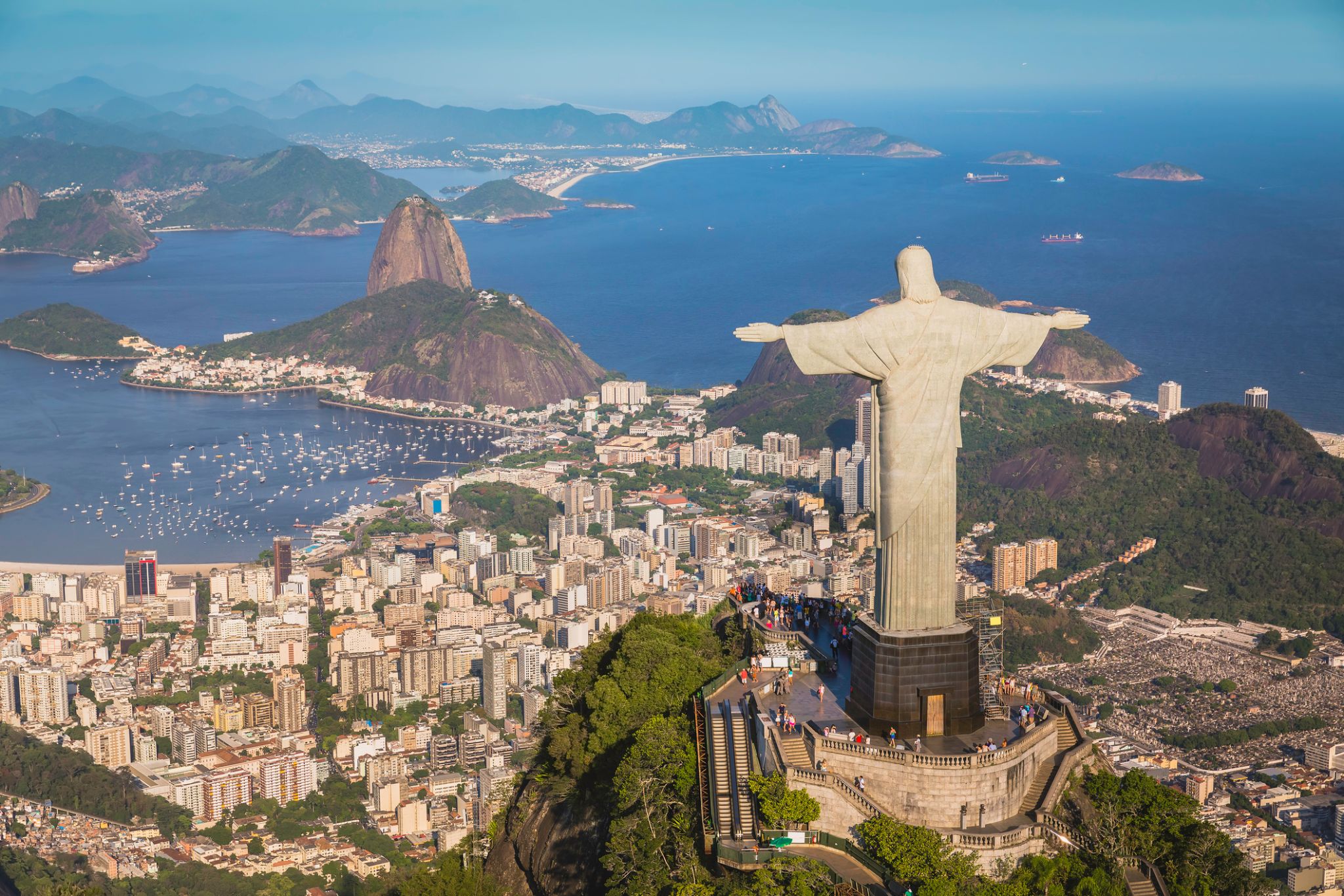
Rio de Janeiro is the second-most populous municipality in Brazil and the sixth-most populous in the Americas. The metropolis is anchor to the Rio de Janeiro metropolitan area, the second-most populous metropolitan area in Brazil and sixth-most populous in the Americas. Rio de Janeiro is the capital of the state of Rio de Janeiro, Brazil's third-most populous state. Part of the city has been designated as a World Heritage Site, named "Rio de Janeiro: CariocaLandscapes between the Mountain and the Sea", by UNESCO on 1 July 2012 as a Cultural Landscape.
Founded in 1565 by the Portuguese, the city was initially the seat of the Captaincy of Rio de Janeiro, a domain of the Portuguese Empire. Later, in 1763, it became the capital of the State of Brazil, a state of the Portuguese Empire. In 1808, when the Portuguese Royal Court transferred itself from Portugal to Brazil, Rio de Janeiro became the chosen seat of the court of Queen Maria I of Portugal, who subsequently, in 1815, under the leadership of her son, the Prince Regent, and future King João VI of Portugal, raised Brazil to the dignity of a kingdom, within the United Kingdom of Portugal, Brazil, and Algarves. Rio stayed the capital of the pluricontinental Lusitanian monarchy until 1822, when the War of Brazilian Independence began. This is one of the few instances in history that the capital of a colonising country officially shifted to a city in one of its colonies. Rio de Janeiro subsequently served as the capital of the independent monarchy, the Empire of Brazil, until 1889, and then the capital of a republican Brazil until 1960 when the capital was transferred to Brasília.

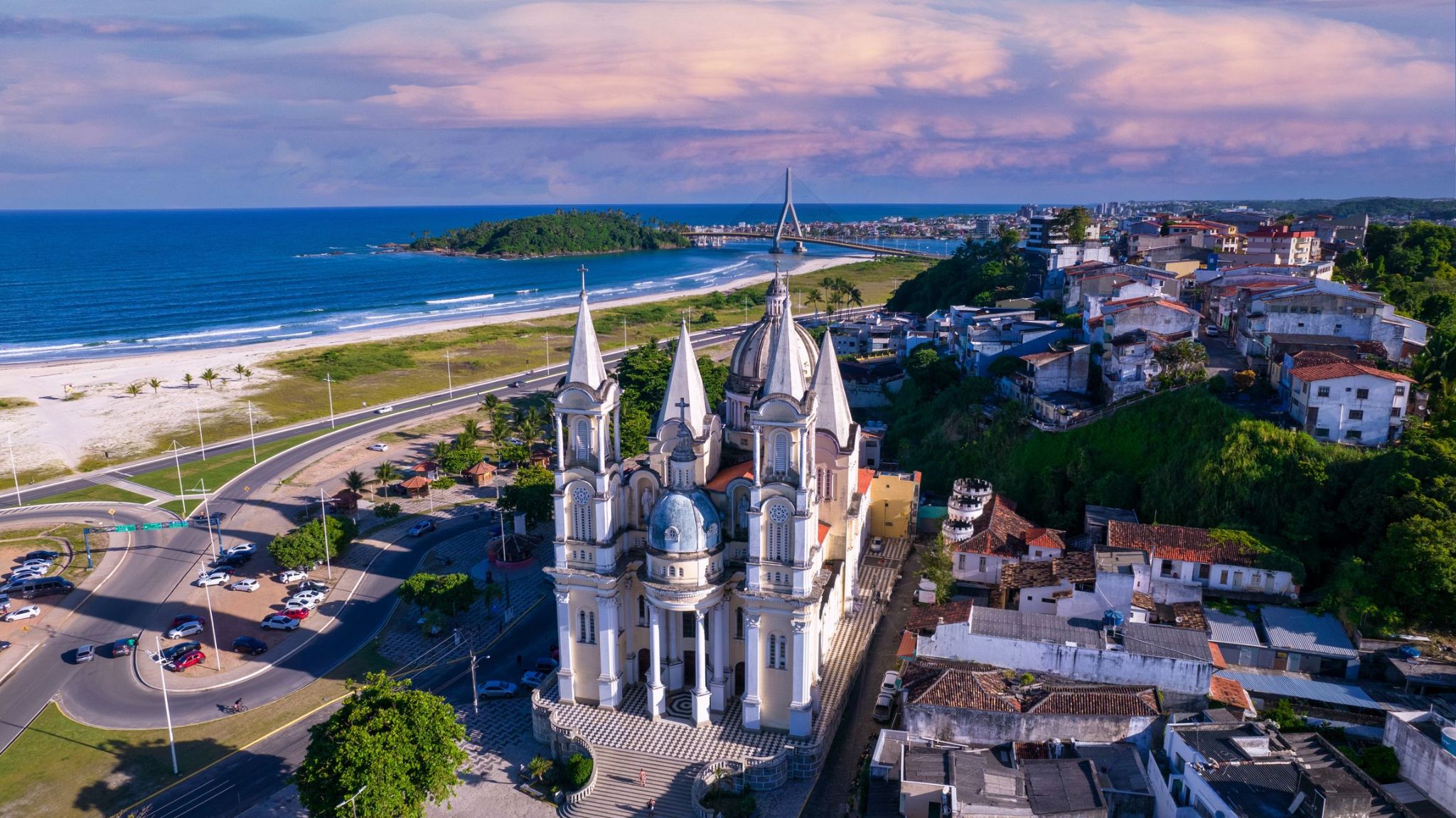
Ilheus – serce brazylijskiego regionu kakao. Ilheus, położony na wybrzeżu stanu Bahia, to barwne miasto z bogatą historią, słynące jako centrum przemysłu kakao w Brazylii. Zostało założone w 1534 roku i stało się ważnym węzłem ekonomicznym i kulturalnym regionu w XIX i XX wieku. Miasto otoczone jest tropikalnymi lasami i długimi piaszczystymi plażami, co tworzy unikalne połączenie natury i historii. Architektura z okresu kolonialnego, w tym kościół św. Sebastiana i stare rezydencje baronów kakao, nadaje Ilheus szczególny urok.
Ilheus jest także znane jako ojczyzna Jorge Amado, jednego z najbardziej znanych brazylijskich pisarzy, który uwiecznił miasto w swoich powieściach. W muzeum Casa de Jorge Amado można poznać więcej o jego życiu i literaturze, ściśle związanej z historią miasta. Turyści przyjeżdżają do Ilheus, aby cieszyć się nie tylko plażami, ale także kulturą regionu – od tradycyjnej kuchni po festiwale. W pobliżu znajduje się rezerwat Una, gdzie można zobaczyć rzadkie gatunki zwierząt, w tym zagrożone złote tamaryny.
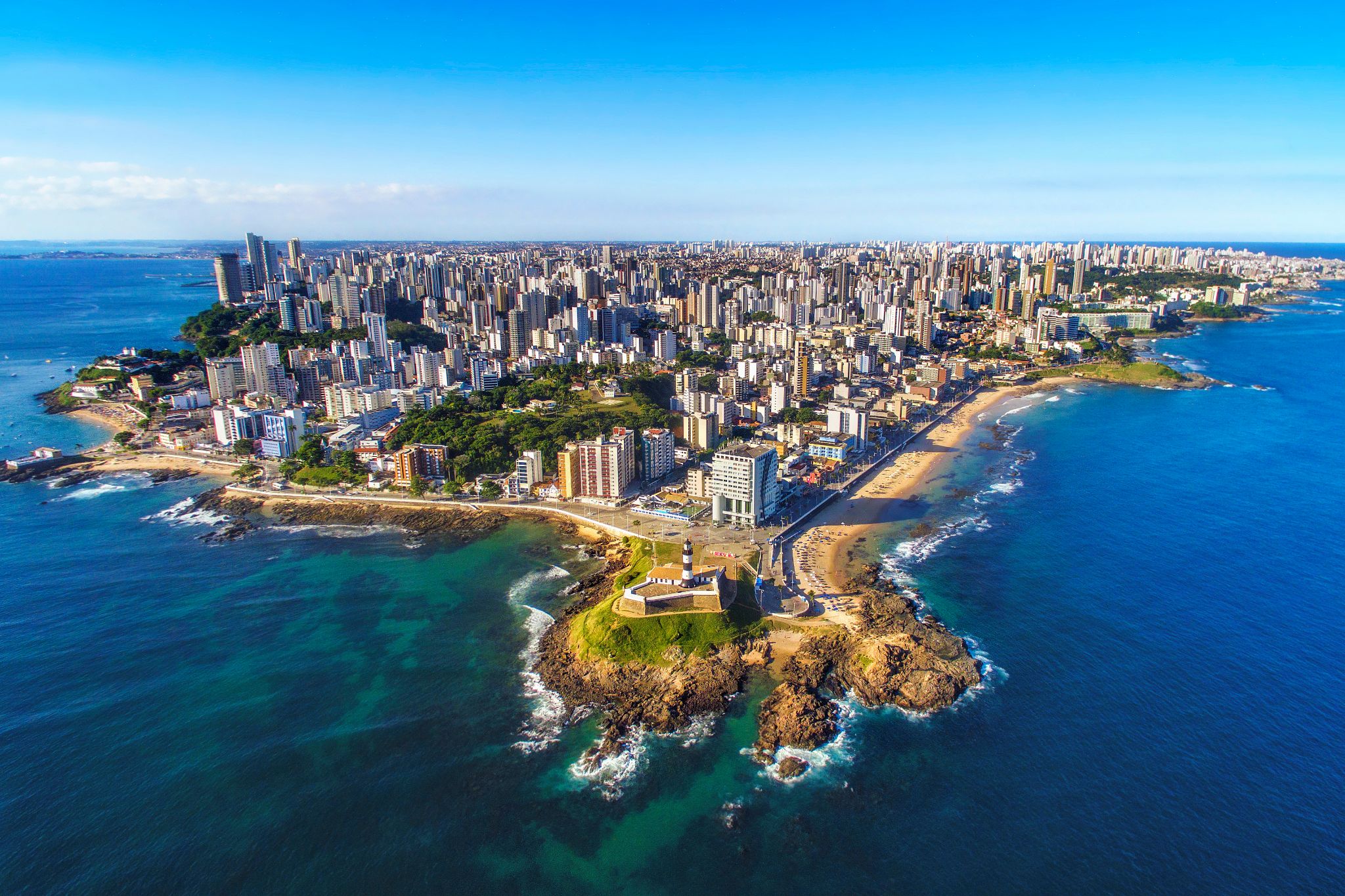
Salvador is the capital of Bahia state and was formerly the first capital of Brazil. Salvador is known for its endless number of churches, as well as for being a land of majestic fortresses. After visiting these places, it is also worth taking a look at the Chapada Diamantina National Park – the most interesting natural park in Brazil. In Salvador, there reigns an atmosphere of joy, revelry, and holidays – this is due to the fact that the local population was influenced by Africa. In Salvador, you can always admire the natural beauty of this area. You will be enchanted by the sensuality of this land, and you will be able to discover a piece of its mysterious power.
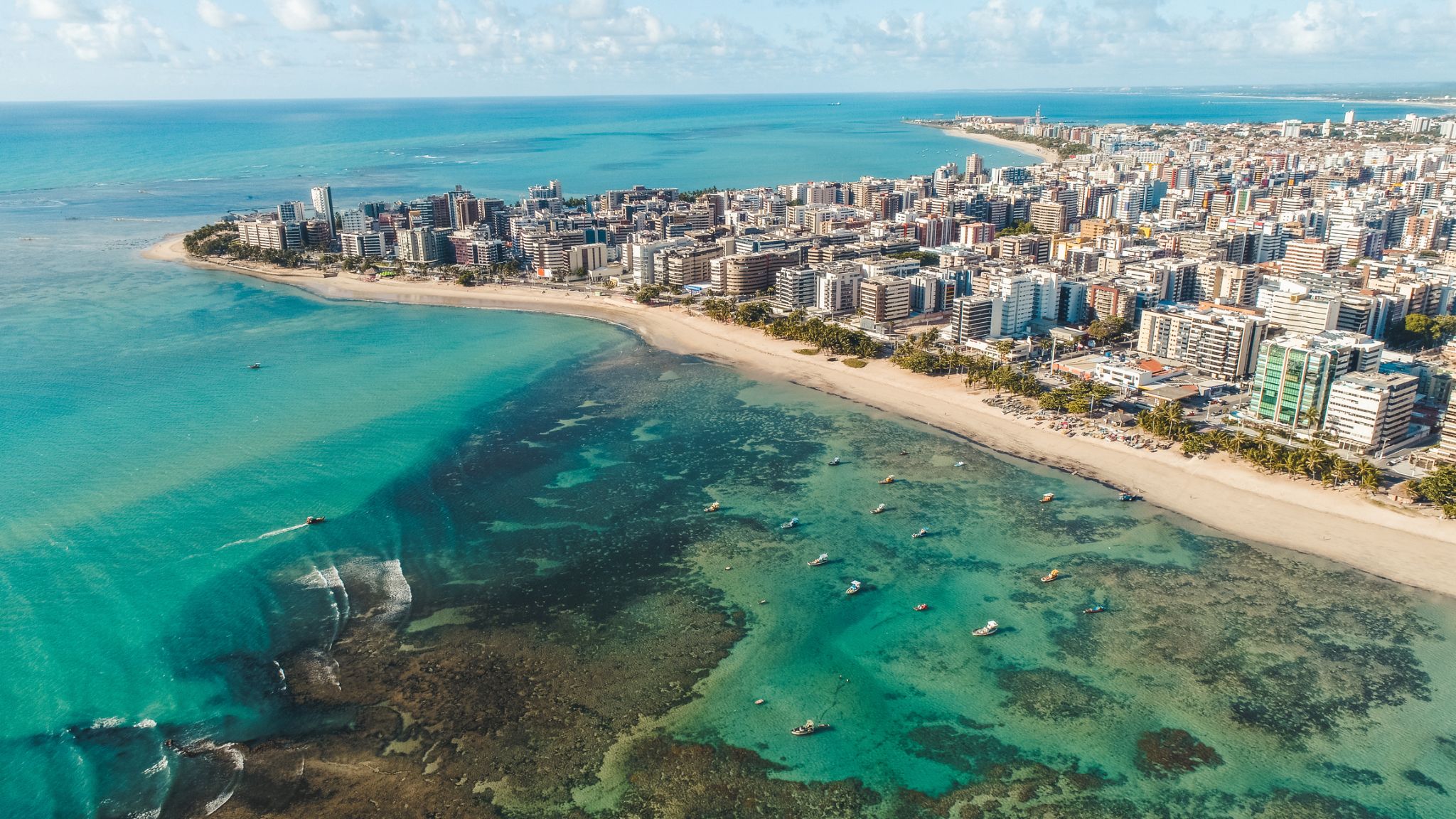






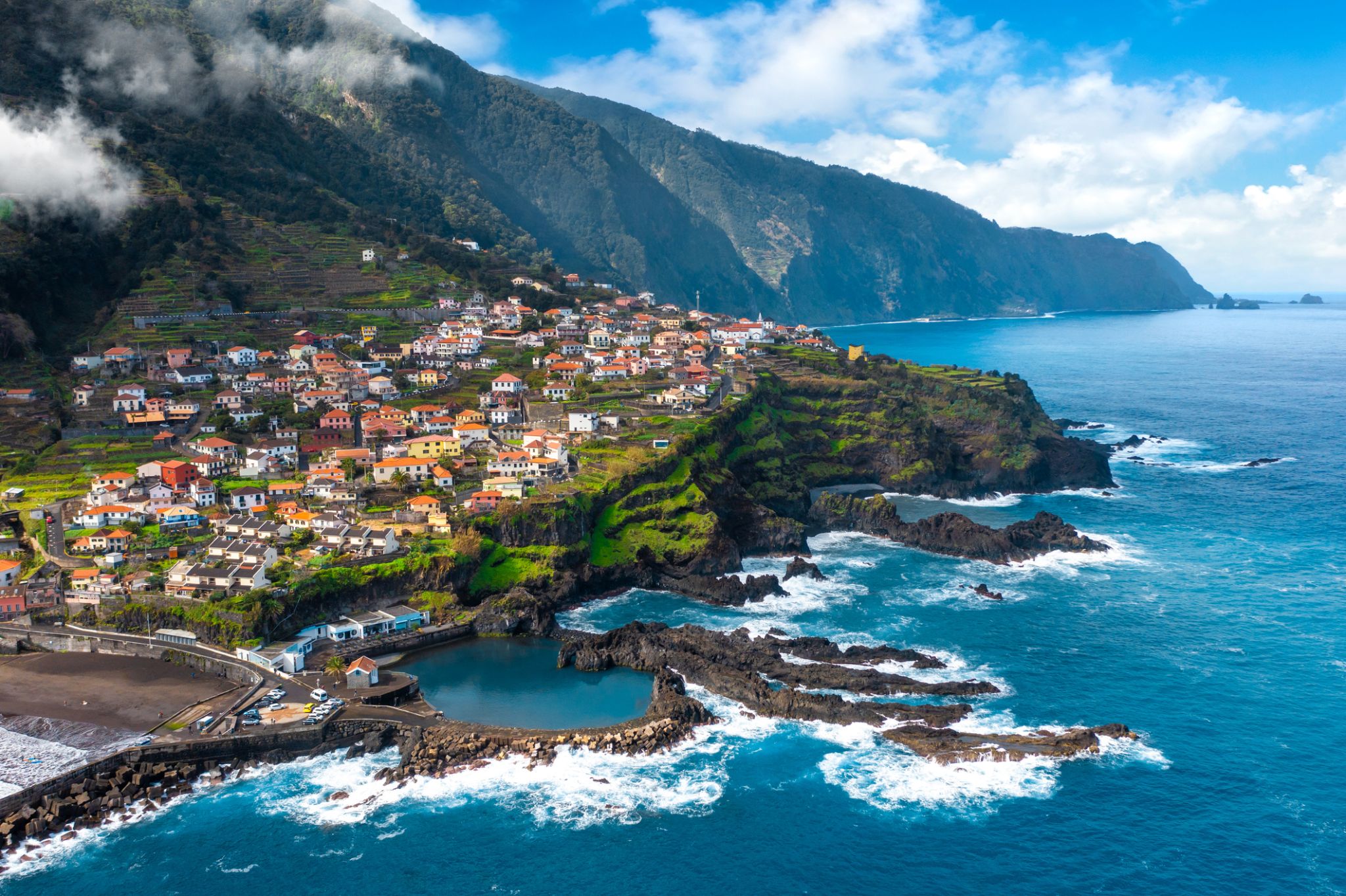
Madeira, officially the Autonomous Region of Madeira, is one of the two autonomous regions of Portugal (along with the Azores). It is an archipelago situated in the north Atlantic Ocean, southwest of Portugal. Its total population was estimated in 2011 at 267,785. The capital of Madeira is Funchal, which is located on the main island's south coast.
The archipelago is just under 400 kilometres (250 mi) north of Tenerife, Canary Islands. Bermuda and Madeira, a few time zones apart, are the only land in the Atlantic on the 32nd parallel north. It includes the islands of Madeira, Porto Santo, and the Desertas, administered together with the separate archipelago of the Savage Islands. The region has political and administrative autonomy through the Administrative Political Statue of the Autonomous Region of Madeiraprovided for in the Portuguese Constitution. The autonomous region is an integral part of the European Union as an outermost region.


Vigo is a city and municipality adjoining the Atlantic Ocean in the province of Pontevedra in Galicia, northwest Spain. It is the capital of the comarca of Vigo and Vigo metropolitan area.
Vigo is the most populous municipality of Galicia, the 14th in Spain, and the most populous Spanish municipality that is not the capital of a province. It has an area of 109.06 km2 (42.11 sq mi) and had a population of 292,817 in 2016.
The city is located in the southwest of Galicia, in the southern part of Vigo Ria, one of Europe's rainiest areas. In the northeast, it borders the municipality of Redondela; in the east, Mos; in the south, O Porriño and Gondomar; and in the southwest, Nigrán. On the other side of its bay are the municipalities of Cangas and Moaña. They are all part of the southern Galician region called Rías Baixas. Vigo is just north of the border with Portugal; its nearest larger city is Porto, Portugal's second-largest city.
Vigo and its metropolitan area are one of the region's primary economic agents.
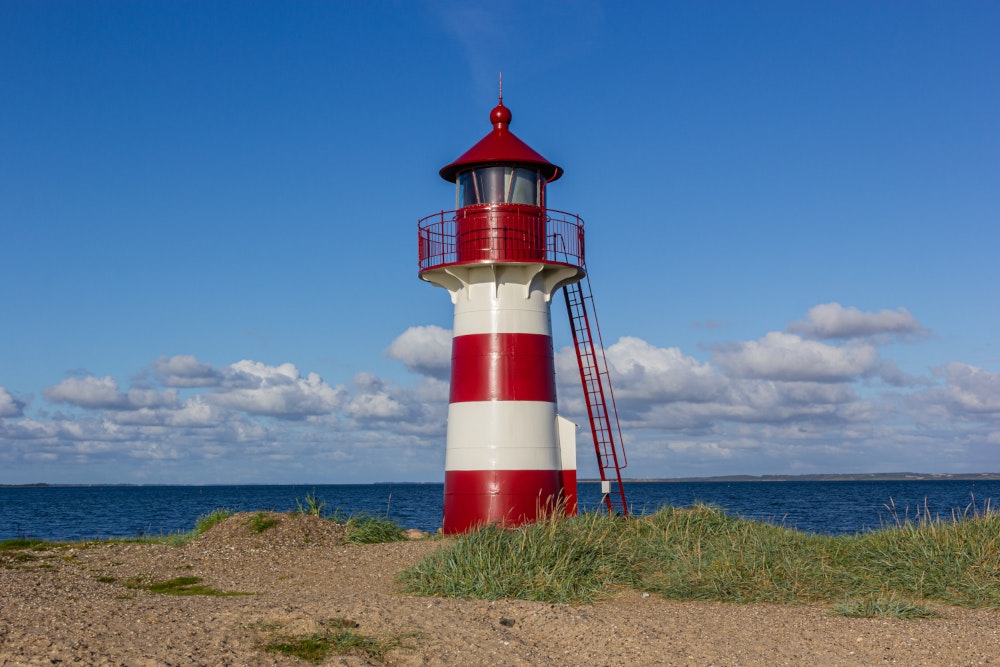
Na malowniczym wybrzeżu Zatoki Biskajskiej w hiszpańskim regionie Asturii położone jest urokliwe miasto Gijón, które zachwyca odwiedzających unikalnym połączeniem kultury, przyrody i gastronomii. Tutaj można spacerować po malowniczych plażach San Lorenzo, odwiedzać liczne muzea sztuki współczesnej oraz spróbować słynnego asturyjskiego cydru w tradycyjnych „chigres”.
Gijón to idealne miejsce dla tych, którzy cenią sobie połączenie historii i nowoczesnego życia. Poza pięknymi plażami i przytulnymi uliczkami miasto słynie z barwnych festiwali, takich jak Festiwal Morza i Festiwal Piosenki, które dodają podróży wyjątkowych wrażeń. Dla aktywnych turystów dostępne są różnorodne sporty wodne oraz szlaki piesze z zapierającymi dech w piersiach widokami na wybrzeże.

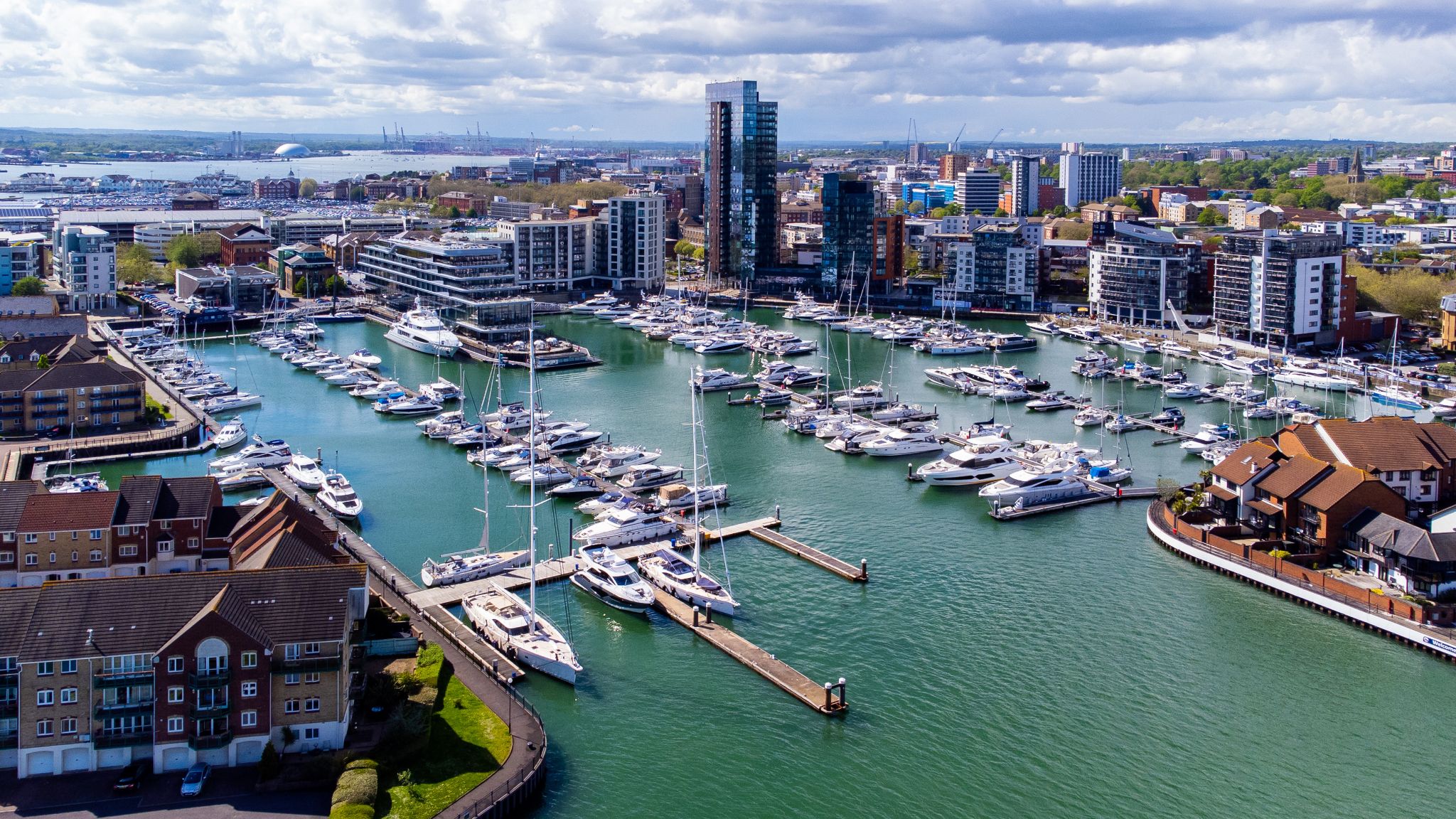
Southampton is the largest city in the ceremonial county of Hampshire, England. It is 69 miles (111 km) south-west of London and 15 miles (24 km) west north-west of Portsmouth. Southampton is a major port and the closest city to the New Forest. It lies at the northernmost point of Southampton Water at the confluence of the Rivers Test and Itchen, with the River Hamble joining to the south of the urban area. The city, which is a unitary authority, has an estimated population of 253,651. The city's name is sometimes abbreviated in writing to "So'ton" or "Soton", and a resident of Southampton is called a Sotonian.
Significant employers in the city include Southampton City Council, the University of Southampton, Solent University, Southampton Airport, Ordnance Survey, BBC South, the NHS, ABP and Carnival UK. Southampton is noted for its association with the RMS Titanic, the Spitfire and more generally in the World War II narrative as one of the departure points for D-Day, and more recently as the home port of a number of the largest cruise ships in the world. Southampton has a large shopping centre and retail park, Westquay. In 2014, the city council approved a neighbouring followup Westquay South which opened in 2016–2017.
In the 2001 census Southampton and Portsmouth were recorded as being parts of separate urban areas; however by the time of the 2011 census they had merged apolitically to become the sixth-largest built-up area in England with a population of 855,569. This built-up area is part of the metropolitan area known as South Hampshire, which is also known as Solent City, particularly in the media when discussing local governance organisational changes. With a population of over 1.5 million this makes the region one of the United Kingdom's most populous metropolitan areas.
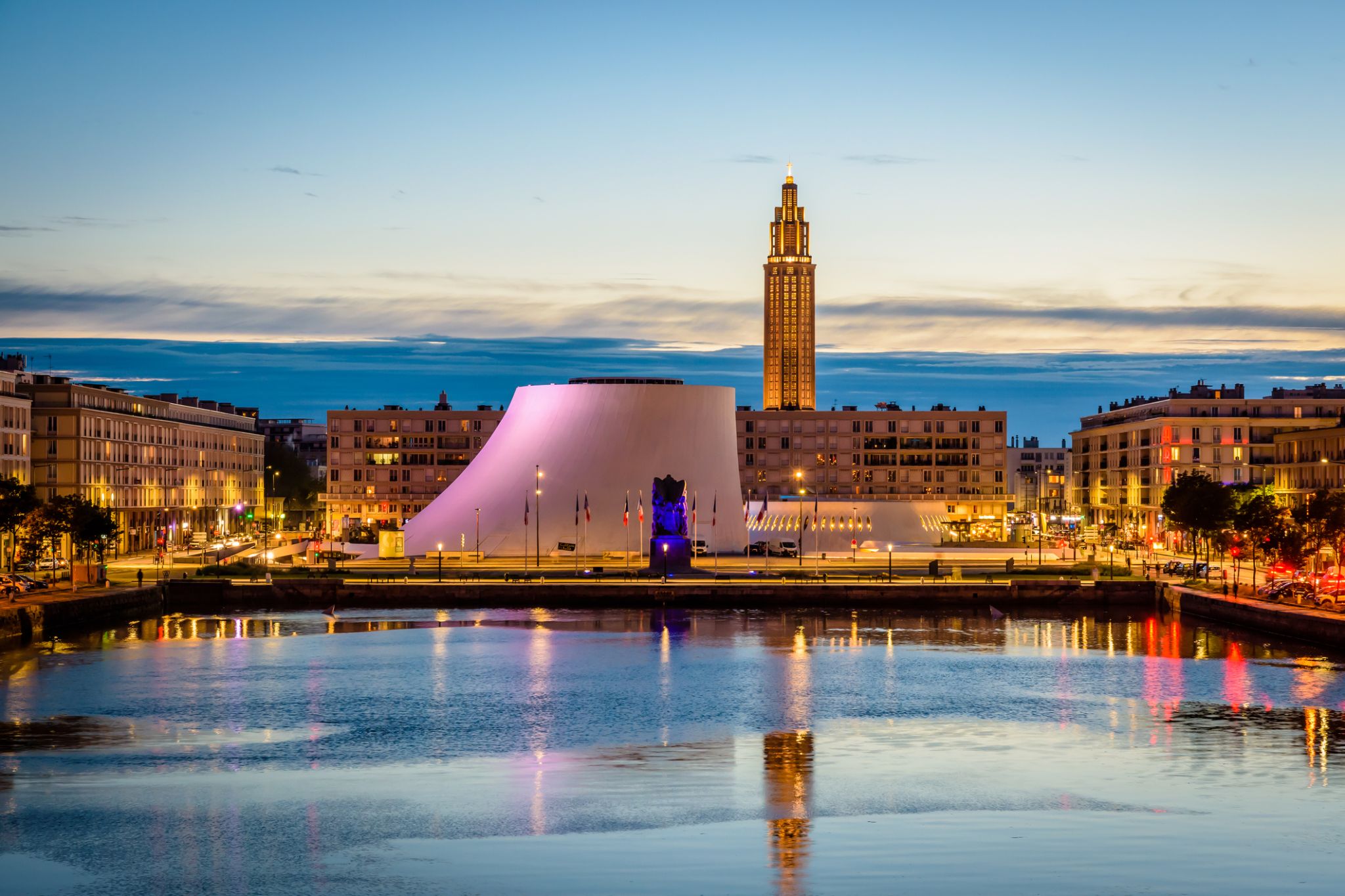
Le Havre to portowe miasto na północnym zachodzie Francji, położone nad brzegiem Kanału La Manche, będące ważnym centrum handlu morskiego i budownictwa okrętowego. Założone w XVI wieku, Le Havre szybko rozwinęło się dzięki swojej strategicznej lokalizacji, stając się jednym z największych portów kraju. Miasto jest znane z modernistycznej architektury, która została starannie zaplanowana po zniszczeniach II wojny światowej. W 2005 roku historyczne centrum miasta zostało wpisane na listę światowego dziedzictwa UNESCO, a słynny zespół architektoniczny zaprojektowany przez Auguste’a Perreta stał się ważną częścią miejskiej tożsamości.
Dziś Le Havre przyciąga turystów swoją unikalną atmosferą, łączącą elementy stare i nowe. Jedną z głównych atrakcji jest Notre-Dame-de-Grâce oraz Centrum Kultury Dunkierka, gdzie odbywają się koncerty, wystawy i przedstawienia teatralne. Lokalne plaże i promenady są idealnymi miejscami do spacerów i wypoczynku, a liczne restauracje serwują świeże owoce morza. Le Havre stało się także ważnym centrum kulturalnym i ekonomicznym, przyjmującym gości nie tylko z Francji, ale także z całego świata.
